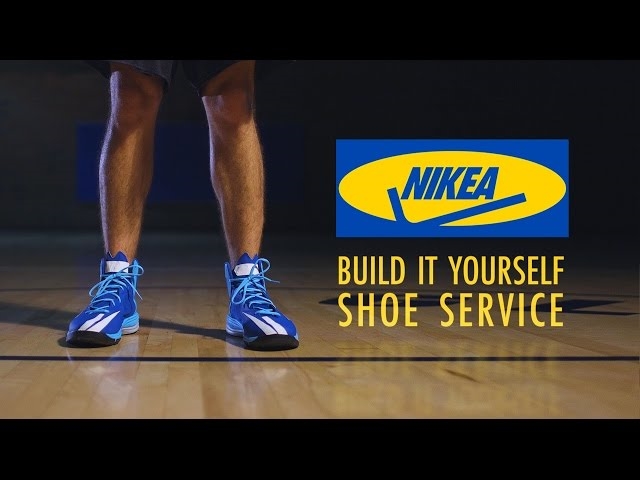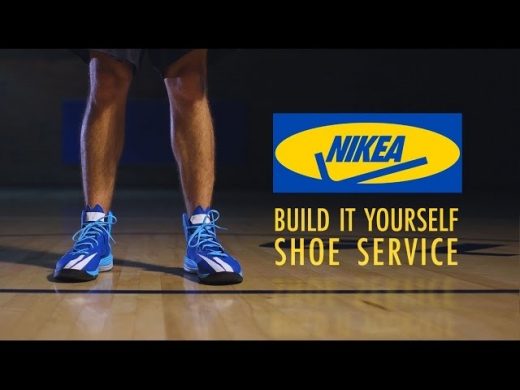Was Nike and Ikea’s Shunning of Amazon a Smart Move?
Amazon is known for catapulting companies to stardom, and for 25 years, the company has built a strong track record of success – and a startling array of marketing and advertising strategies – leading to millions of sellers and shoppers to place their trust in its state-of-the-art delivery service and customer-centric approach.
But it hasn’t all been smooth sailing for the eCommerce giant. Huge brands like Nike and Ikea have avoided selling their products directly through Amazon for years.

One of the main reasons is that competing with third party sellers who, throughout the years, have consolidated their position in the platform by legally reselling their products at cheaper prices than those sold at their brick-and-mortar stores, is simply not worth the investment of time and resources. The convenience of being able to shop straight from your couch, and the amount of time saved in the process are also becoming more important to the end customer.
Moreover, the abundance of counterfeits on the platform is still a problem of considerable extent, and seeing faux versions of your products, circulating briskly before your eyes, is a tough pill to swallow for any brand-registered business.
However, both companies decided to give this partnership a shot a few years ago. As the adage goes, “You must make peace with your enemy, not with your friends”. This is how it all started…
The Irony of It All
In an effort to maintain the perception of brand-exclusivity, Nike staunchly withstood the temptation of selling its products directly through Amazon for over two decades.
Ironically, their products had been openly commercialized on Amazon by third-party sellers long enough, turning the sportswear giant into the most-purchased brand on the platform —without having to lift a finger itself.
It was only a matter of time – and necessity – before Nike caved into Amazon’s charms.
Nike’s Ultimatum
In 2017, Nike cut 2% of its workforce around the world to focus its investments in selling directly to its customers, facing the fact that brick-and-mortar is inevitably fading into oblivion.
This led Nike’s CEO, Mark Parker, to announce that both companies had agreed upon a partnering strategy based on a pilot program, that aimed, in Parker’s words, “to elevate the way the brand was presented” – and, to have more control over the way their products will be marketed going forward.
The cautious approach Nike followed, on the eve of sealing the deal, consisted on offering only a limited number of products, contingent upon Amazon’s ability to demonstrate it could remove all the unauthorized sellers who have made millions at Nike’s expense over the years.
Third-party sellers were expressly prohibited from reselling Nike’s products on Amazon, and according to an analysis released in February 2018 the total number of listings showcasing Nike’s products decreased by 46% over a 6-month period – which is almost directly correlated to the decrease in overall third-party sellers.
While the two-year pilot seemed promising, Nike never compromised with Amazon by at least allowing the least popular items, such as their basic line of shoes, to be listed on the platform. And the fact that Nike’s listings continued to appear alongside those from Amazon third-party sellers in search results, did not make matters better.
The Amicable Split
In November 2019, Nike put an end to the two-year trial relationship with Amazon. The Wall Street Journal reported that Nike was “disappointed the deal with Amazon didn’t eliminate counterfeits and give the brand more control over gray-market goods”.
However, the athletic apparel retailer is still considering to use Amazon Web Services for its website and mobile apps. This is testament to Amazon’s genius in expanding its array of services beyond the eCommerce realm and that, despite the sour experience, Nike is aware of the value which Amazon’s services bring to both consumers and retailers alike.
The Ikea Case
In 2018, the widely-respected and acclaimed Swedish “assemble-it-yourself” furniture behemoth, took on Amazon in an attempt to “simplify” smart home technology and “make it affordable”, according to Ikea’s chef executive Torbjorn Loof.
It is worth mentioning, however, that Ikea never saw Amazon as a competitor, but instead as a potential collaborator.
Ikea decided to partner up with Amazon to take leverage of the retail giant’s sophisticated shipping services and infrastructure, and commercialize their small items worldwide. It is well-known that trying to buy stuff on Ikea’s website is truly an epic journey. Not to mention their hefty shipping costs.
Ikea’s limited pilot program with Amazon went virtually unnoticed, leaving no official record to gauge what may have gone wrong.
According to Nasdaq.com, Ikea hasn’t come clean about why they decided to cut ties with Amazon; although, it is suggested that the company might have followed Nike in their determination to steer clear of Amazon’s counterfeit issue. It is not an overstatement to say that some third-party sellers like to take advantage of “free-shipping” through Prime to significantly raise prices.
It is therefore believed that Ikea wanted to maintain a spotless reputation by taking full control of their sales, prices, and exposure.
It all comes down to the type of audience the company is trying to reach, and Ikea decided to cordially withdraw from Amazon’s arena. After all, they have done a great job at becoming industry darlings by doing things in their own unique way.
Closing thoughts
Although Nike and Ikea are big players, in their respective fields, they have yet to invest in logistics, customer service, and fast-shipping solutions the way Amazon has, and both have failed to build the direct-to-customer margins that have positioned Amazon as the undisputed leader of the eCommerce race.
The retail world is now a buyer’s market, and industry leaders will have no choice but to adapt and find the most efficient and scalable channels to get their products in the hands of savvy–and convenience-seeking consumers, even if it means playing nice with third-party sellers in order to provide the best shopping experience possible.
At the end of the day, Nike and Ikea’s departure will not stop Amazon from distributing their products. Until a better solution comes along, more brands may be forced to work with Amazon than not.
Digital & Social Articles on Business 2 Community
(14)


